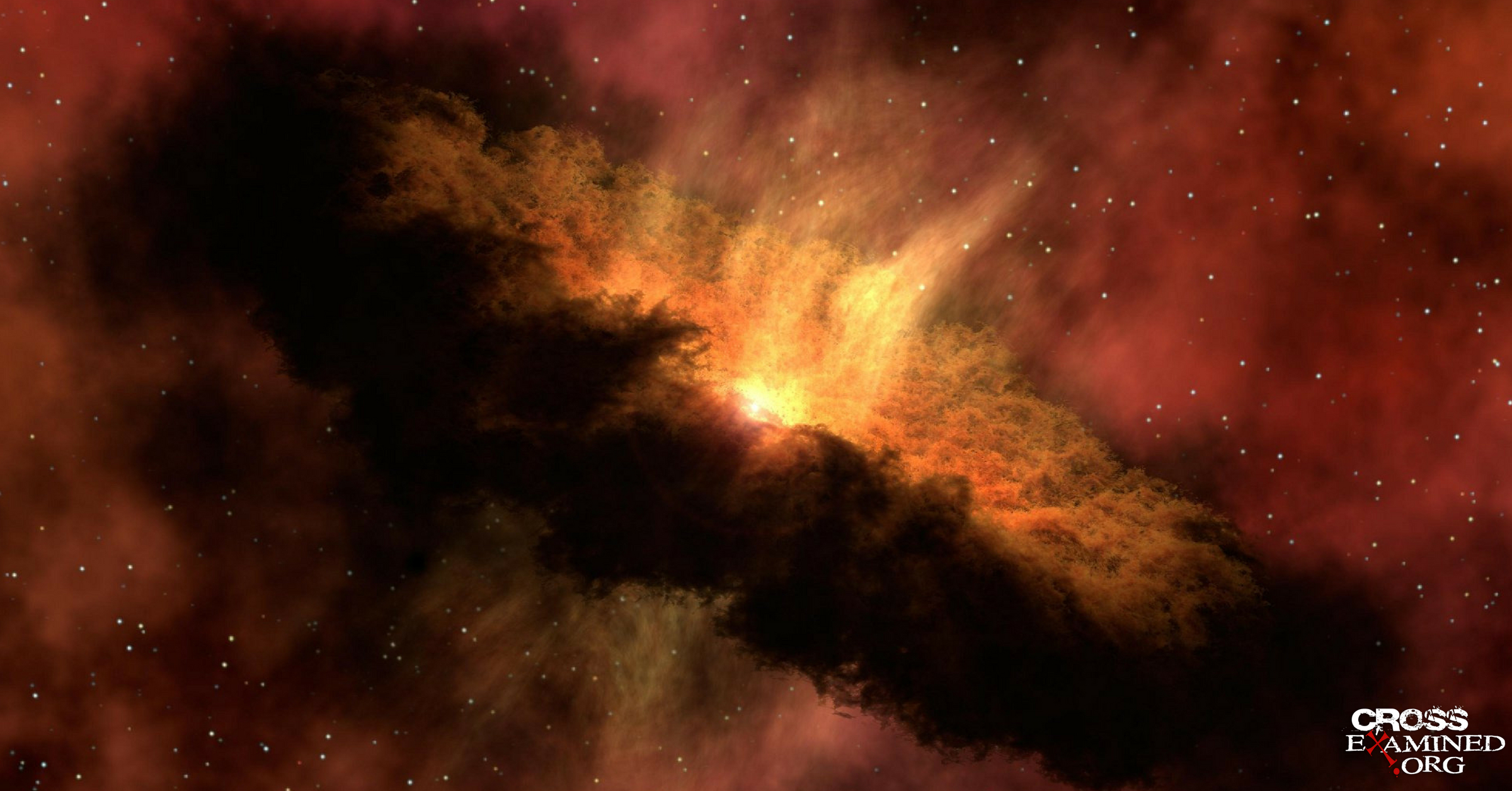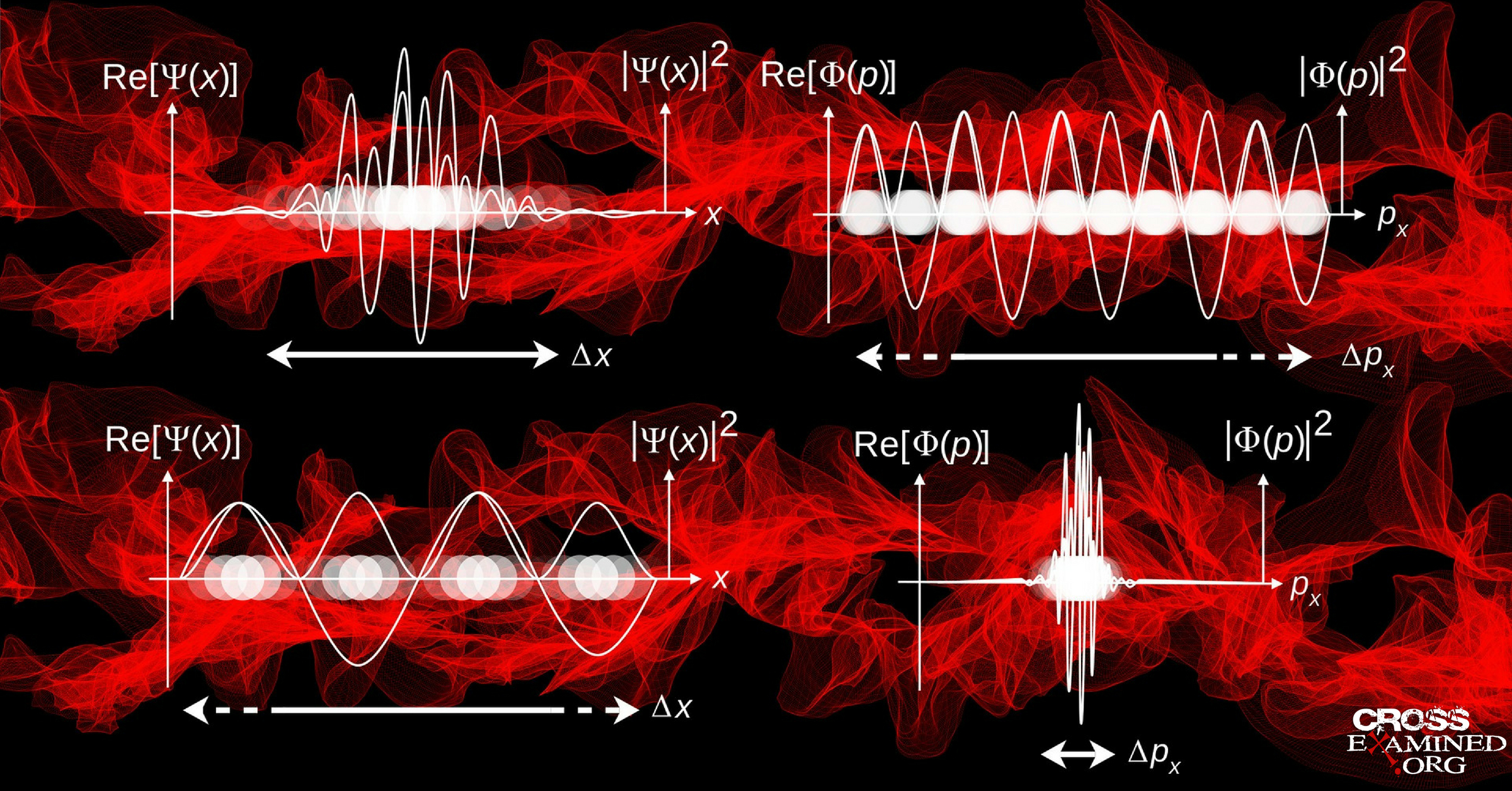Por Alvin Plantinga
Discurso pronunciado por Alvin Plantinga en 2009 en la American Philosophical Association Central Division Conference.
INTRODUCCIÓN
“Ciencia y religión: donde el conflicto realmente se encuentra”. Ese es el título. Nuestra pregunta es la siguiente: ¿son la ciencia y la religión compatibles? Un proyecto útil sería tratar de hacer esta pregunta más precisa. ¿Qué es la religión? ¿Qué es la ciencia? ¿Qué es la incompatibilidad y en qué variedades viene? ¿Hay contradicción explícita, contradicción implícita, contradicción en la presencia de supuestos plausibles, la improbabilidad de conjunción, y similares? Algunos afirman que el teísmo en sí es inconsistente; en cuyo caso, como es natural, será incompatible con la ciencia… y con todo lo demás. Otros responden que lo mismo vale para la ciencia: la relatividad general actual es incompatible con la teoría cuántica actual, por lo que la propia ciencia actual es inconsistente. En cuyo caso, es incompatible con la religión… y con todo lo demás. Estos son buenos temas, pero van a tener que esperar para otra ocasión.
Aquí voy a asumir que tenemos al menos una idea aproximada bastante buena de la cuestión. No voy a estar hablando de la religión en general, sino la religión teísta específicamente y en particular la creencia cristiana. Pero la parte cristiana será menos importante que la parte teísta. Cuando hablo de la creencia cristiana estoy pensando en Mere Christianity de C.S. Lewis: algo así como la intersección de los grandes credos cristianos. Así que a pesar de que lo que digo está explícitamente centrado a la fe cristiana, también será relevante para muchas variedades del judaísmo y el islam.
¿Por qué creer que hay un conflicto aquí? Se han ofrecido muchas sugerencias. Por ejemplo, la religión teísta respalda la acción divina especial en el mundo, los milagros, por ejemplo. Pero tal acción estaría en contradicción con las leyes promulgadas por la ciencia. Otro ejemplo, existe tal cosa como la visión científica del mundo y es incompatible con la religión teísta. La fe cristiana implica que los seres humanos han sido creados a imagen de Dios, pero la teoría contemporánea evolutiva -correctamente entendida- implica que ni Dios ni nadie han diseñado, planificado, o intentado que los seres humanos lleguen a ser. La psicología evolutiva está llena de teorías que son incompatibles con entendimientos teístas de los seres humanos. Algunos eruditos bíblicos científicos sostienen que las declaraciones históricas del cristianismo, por ejemplo, que Jesús resucitó de entre los muertos, son falsas, o en todo caso sin fundamento. Todos estos son de gran interés, pero voy a limitarme en esta charla a un grupo de cuestiones que tienen que ver con la evolución.
Voy a argumentar:
(1) Que la teoría evolutiva contemporánea no es incompatible con la creencia teísta.
(2) Que los principales argumentos anti-teístas que implican evolución junto con otras premisas también fallan.
(3) Que incluso si la ciencia actual – evolutiva o de otro tipo- fuesen incompatibles con la creencia teísta, no se sigue que la creencia teísta es irracional o injustificada o que tiene otro tipo de problema. Y por último:
(4) Que el naturalismo -el pensamiento de que no hay tal persona como el Dios de las religiones teístas ni nada por el estilo- Dios es un elemento esencial en la visión naturalista del mundo, que es una especie de sí cuasi-religión en el sentido de que juega algunos de los papeles más importantes de la religión. Y, yo sostengo que la visión naturalista del mundo es, de hecho, incompatible con la evolución. Por lo tanto, sí hay un conflicto ciencia y religión (o cuasi-religión), pero es el conflicto entre el naturalismo y la ciencia, no entre la religión teísta y la ciencia.
LA TEORÍA EVOLUTIVA CONTEMPORÁNEA ES COMPATIBLE CON LA CREENCIA TEÍSTA
El término “evolución” cubre una variedad de tesis. Está la tesis de la Tierra vieja por ejemplo. Está la tesis de la descendencia con modificación. Está la tesis de que la enorme diversidad del mundo viviente contemporáneo se ha producido a través de diferentes descendencias de sus padres -normalmente en pequeñas y sutiles formas. Existe la tesis de ascendencia común: la afirmación de que -como lo expresa Gould- hay un árbol de descendencia evolutiva que une todos los organismos por profundos lazos de genealogía. Voy a usar el término “evolución” para referirme a la conjunción de estas tres tesis.
También está (4), la afirmación de que el principal mecanismo de conducción de este proceso de la descendencia con modificación es la selección natural –filtración de la selección natural por mutación genética aleatoria. Dado que una propuesta similar fue característica de Darwin –él dijo que la selección natural ha sido el principal pero no único medio de modificación—llamaremos a esta tesis darwinismo (por lo que es la cuarta tesis).
Ahora está claro que creo que no hay conflicto entre la religión teísta y la tesis de la tierra vieja o la tesis de descendencia con modificación o la tesis de un ancestro común. Según las creencias teístas, Dios ha creado el mundo de los vivos, pero por supuesto que podría haberlo hecho de muchas maneras diferentes y, en particular, de forma compatible con estas tesis. ¿Qué pasa con la cuarta tesis, el darwinismo? ¿Es incompatible con la religión teísta? Muchos aparentemente piensan que sí. Entre ellos se encuentran Richard Dawkins, Daniel Dennett sentado aquí a mi izquierda, George Gaylord Simpson y muchos otros, y ahora del otro lado Phillip Johnson. Pero ¿tienen razón? ¿Dónde exactamente se plantearía tal incompatibilidad?
Una fuente sugerida de conflicto tiene que ver con la doctrina cristiana de la creación -en particular la afirmación de que Dios ha creado a los seres humanos a su imagen. Esto requiere que la intención de Dios fue crear criaturas de un cierto tipo, y planeó que haya criaturas de ese tipo. Criaturas racionales, tal vez con un sentido moral y la capacidad de conocerlo y amarlo. Se requiere que la intención de Dios fue crear criaturas de esta naturaleza, y luego actuó de una manera tal como para llevar a cabo esta intención. Esta afirmación es puramente coherente con la evolución (esas tres primeras tesis), como los teólogos cristianos conservadores han señalado ya en 1871 con Charles Hodge en Princeton. ¿Pero es también coherente con el darwinismo? Parece que sí lo es. Dios podría haber causado las mutaciones adecuadas para surgir en el momento adecuado. Él podría haber conservado las poblaciones de peligros de varios tipos, y así sucesivamente. Y de esta manera, al orquestar el curso de la evolución, podría haber asegurado que llegará a haber criaturas del tipo que se propone. Ahora lo que no es coherente con la fe cristiana, sin embargo, es la afirmación de que la evolución y el darwinismo son sin guía y tomaré eso como ser planeado y no planeado. Lo que no es coherente con la fe cristiana es la afirmación de que ningún agente personal (ningún Dios) ha guiado, programado, destinado, dirigido, orquestado, o moldeado todo este proceso. Sin embargo, precisamente esta afirmación es hecha por un gran número de científicos y filósofos contemporáneos que escriben sobre este tema. Hay un verdadero coro de distinguidos expertos que insisten en que este proceso es sin guía; de hecho, a veces insistiendo en que es parte de la teoría científica contemporánea de la evolución misma el afirmar que es sin guía por lo que la teoría evolutiva, como tal, es incompatible con la fe cristiana.
Según George Gaylord Simpson, por ejemplo, “El hombre (y sin duda la mujer también) es el resultado de un proceso sin propósito y natural que no lo tiene en cuenta”[1].
En este sentido, el difunto Stephen Jay Gould y otros han hecho hincapié en lo que ellos consideran el carácter no dirigido, azaroso y contingente de la evolución. Si la película evolutiva se rebobinara y luego la dejamos avanzar de nuevo, lo más probable es que habría criaturas de un tipo muy diferente de las actualmente presentes en la tierra. Lo más probable es que no conseguiríamos nada parecido al Homo sapiens. Pero la sugerencia de Gould, creo, presupone que Dios no ha guiado y orquestado el curso de la evolución; y por lo tanto, no puede ser apelado como una razón para suponer que no lo ha hecho. Dada la evidencia biológica y la proposición de que de hecho Dios ha creado a los seres humanos a su imagen… [Inaudible]… la sugerencia de Gould es totalmente inverosímil. Porque si la película se rebobinara y luego se deja ir hacia delante de nuevo, sin duda Dios todavía prevería que hubiera criaturas creadas a su imagen, y planearía que hubiese tales criaturas.
¿Qué pasa con el hecho de que las mutaciones genéticas se dice que son al azar? Ustedes podrían preguntarse si las mutaciones genéticas podrían ser tanto aleatorias como previstas y causadas por Dios. Si estas mutaciones son al azar, ¿no son sólo una cuestión de suerte… de azar ciego? Pero no es parte de la teoría de la evolución actual decir que estas mutaciones son aleatorias en extensión, implicando que son sin causa (se dice que es causada por los rayos cósmicos, por ejemplo), y menos aún que se producen por casualidad.
Según Ernst Mayr, decano de biología de la Segunda Guerra Mundial, “Cuando se dice que la mutación o variación es al azar, la declaración simplemente significa que no existe una correlación entre la producción de nuevos genotipos y las necesidades adaptativas de un organismo en un entorno determinado”[2].
Elliot Sober pone el punto con un poco más de cuidado (o tal vez más plenamente), “No hay mecanismo físico (ya sean dentro o fuera de los organismos) que detecte cuáles mutaciones serían beneficiosas y causar esas mutaciones para que se produzcan”[3].
El punto es que una mutación resultante para un organismo es aleatoria, al igual que ni el organismo ni su entorno contiene el mecanismo o proceso u órgano que causa mutaciones adaptativas para que se produzca. Pero está claro que una mutación podría ser tanto al azar en ese sentido, y también intencionada (y de hecho causado) por Dios. Por lo tanto, la aleatoriedad involucrada en el darwinismo no implica que el proceso no sea guiado por Dios. El hecho (si es que es un hecho) de que los seres humanos han llegado a ser por medio de la selección natural operando en la mutación genética aleatoria no es en absoluto incompatible con que fueron diseñados por Dios y creándolos a su imagen. Por lo tanto el darwinismo es totalmente compatible con Dios guiando, orquestando y supervisando todo el proceso. De hecho, es perfectamente compatible con la idea de que Dios causa las mutaciones genéticas aleatorias que son filtradas por la selección natural. Tal vez todas ellas. Tal vez sólo algunas. Los que afirman que la evolución muestra que la humanidad u otros seres vivos no han sido diseñados aparentemente confunden el brillo naturalista en la teoría científica con la teoría en sí. La afirmación de que la evolución demuestra que los seres humanos y otros seres vivos no han sido diseñados -contrariamente a las apariencias- no es una parte o una consecuencia de la teoría científica como tal, sino un complemento teológico o metafísico. El naturalismo implica, por supuesto, que los seres humanos no han sido diseñados y creados a imagen de Dios, porque implica que no hay una persona como Dios. Pero la ciencia evolutiva por sí misma no lleva esta implicación. El naturalismo y la teoría evolutiva juntos implican la negación del designio divino. Pero la teoría de la evolución por sí misma no tiene esa implicación. Es sólo la ciencia evolutiva combinada con el naturalismo que implica esta negación. Dado que el naturalismo por sí mismo tiene esta implicación, no es de extrañar que cuando se conjuga con la ciencia -o en la medida de lo que ocurre con cualquier otra cosa: las obras completas de William E. McGonagall, poeta y dramaturgo por ejemplo, o el Almanaque del Granjero, o el Credo del Apóstol- la conjunción también tendrá esta implicación.
ARGUMENTOS GENERALES ANTI-TEÍSTAS DE LA EVOLUCIÓN
Así que el darwinismo como tal no incluye ni implica la proposición de que el proceso es sin guía. ¿Qué pasa con los argumentos generales anti-teístas de la evolución? Soy consciente de tres tipos de argumentos que aquí se proponen. En primer lugar está la afirmación de que la evolución socava el argumento del diseño, reduciendo así el apoyo racional (si lo hay) que goza el teísmo. En segundo lugar, está la afirmación de que el proceso de evolución productor y derrochador de sufrimiento no es el tipo de proceso que Dios usaría o permitiría. Y en tercer lugar, está la idea de que la evolución sin guía como una hipótesis es superior a la hipótesis de que el proceso de la evolución ha sido guiada u orquestado por mentes divinas (o de otro tipo), ya que es más sencillo y más occamístico. Ninguna de estas objeciones, creo yo, son prometedoras. Si bien no puedo tratar adecuadamente ninguna de ellas, por no hablar de todas ellas en el tiempo que tengo, voy a esbozar brevemente una respuesta a cada una.
Comencemos con la afirmación de que la evolución socava el argumento del diseño, por lo que es menos razonable aceptar la creencia teísta.
De acuerdo con John Dupré, “el darwinismo socava la única y remota razón para creer en la existencia de Dios”[4].
Eso es… el argumento del diseño. Ahora es razonable pensar que la evolución hace que sea un poco más fácil ser racional o sensible en aceptar el ateísmo. Antes de 1859, simplemente no había respuestas decentes a la pregunta: si esta abundante variedad de vida no fue creada por Dios, ¿cómo es que está aquí?
En este sentido, Richard Dawkins dice, “Darwin hizo posible ser un ateo intelectualmente satisfecho”[5].
Pero que sea más fácil ser un ateo racional como tal no hace más difícil ser un teísta racional, y como tal no crea un conflicto religión/ciencia. ¿Cuánto apoyo ofrece el argumento del Diseño a las creencias teístas? Tal vez sugiere la creencia en la existencia de un ser (o grupo de seres) muy poderoso, con mucho conocimiento. Pero eso es un largo camino desde el teísmo.
En cualquier caso, sin embargo, la biología molecular actual puede ofrecer los materiales para una clase diferente de argumento del diseño, como se explica en el reciente libro de Michael Behe tan denostado, The Edge of Evolution. Michael Behe es de hecho muy difamado. Su argumento es uno de los pocos argumentos serios y cuantitativos en este ámbito. Tenemos la célula viva, tanto procariotas como eucariotas, con su complejidad estupefaciente y su multitud de máquinas de proteínas elaboradamente complejas. Behe argumenta que la selección natural no guiada es probablemente incapaz de producir estas máquinas de proteínas. Su argumento es cuantitativo y empírico en lugar de a priori. Su pieza central es la saga del parásito de la malaria, Plasmodium falciparum, y su larga guerra de trincheras sobre el genoma humano. No tengo espacio aquí para describir este argumento, pero para mí, como lego el argumento parece razonablemente potente, aunque muy lejos de ser concluyente. Si Behe está en lo correcto, o en cualquier punto cerca de la verdad, la probabilidad de la existencia de la célula como la encontramos es mucho mayor en el teísmo que en el naturalismo. Y si esto es así, el argumento del diseño es reclasificado a un nivel más profundo. Lo que la actual ciencia biológica quita con una mano, lo restaura con la otra. Pero el punto real reside en una dirección diferente. La creencia en Dios es rara vez aceptada sobre la base del argumento teleológico, o de hecho cualquier argumento o prueba proposicional en absoluto. Tanto la observación poco instruida como la investigación actual en el estudio científico de la religión sugieren que una tendencia a creer en Dios (o algo muy parecido a Dios) aparte de cualquier evidencia proposicional es parte de nuestra dotación cognitiva nativa. Por otra parte, si la creencia teísta es verdad, probablemente no requiere pruebas proposicionales por su aceptabilidad racional. Como argumenté en este libro, Warranted Christian Belief, si la creencia teísta es cierta es muy probable que tenga tanto la racionalidad como la garantía en una manera básica: es decir, no sobre la base de la evidencia proposicional. Si la creencia teísta es cierta, entonces es muy probable que haya una estructura cognitiva, algo así como el sensus divinitatis de Juan Calvino, una fuente original de la creencia teísta garantizada. De este modo, la creencia en Dios, como la creencia en otras mentes, tiene su propia fuente de racionalidad y garantía y no depende de los argumentos de otras fuentes para estas cualidades estimables. La pérdida del argumento teleológico (si es que la evolución ha sido comprometida) es tal vez poco más de una amenaza a la creencia racional en Dios como la pérdida del argumento por analogía para otras mentes que es la creencia racional en otras mentes.
En segundo lugar, hay una sugerencia de Gould y otros en que los residuos y el sufrimiento implicado en la evolución es evidencia contra el teísmo.
Phillip Kitcher lo expresa así: “Cuando contemplamos un análogo humano presidiendo una versión en miniatura del diseño… es difícil dotar a nuestra cara con una expresión bondadosa”.
Y entonces llega a sugerir, “tuvo un creador benevolente que propuso utilizar la evolución bajo la selección natural como medio para la consecución de sus fines, podríamos haberle dado algunos consejos útiles”[6].
No estoy seguro de cómo sería recibido este tipo de asesoramiento, pero por supuesto no requerimos de la teoría evolutiva actual (o la ciencia actual en absoluto) para decirnos que el mundo animal está lleno de depredación, muerte, dolor y sufrimiento. Alfred Lord Tennyson señaló que “la naturaleza es roja en diente y garra” mucho antes de 1859 y, sin duda algunos lo sospecharon incluso antes. Aún la ciencia actual nos da razones para creer que el sufrimiento y la muerte han afligido al mundo humano y animal por un tiempo mucho más largo que el que se creía normalmente antes del siglo XIX. Por lo tanto, nos ha dado información sobre el alcance y la duración del sufrimiento de los animales… incluyendo el sufrimiento humano. La primera cosa que ver aquí es creo que este es un caso especial del llamado “problema del mal”: un problema al que se apela para afligir la creencia teísta. El pecado y el sufrimiento constituyen realmente un problema o perplejidad para el teísmo, aunque puede ser difícil de especificar con precisión cuál es el problema. La mayoría de los pensadores ateos han renunciado a la idea de que la existencia del pecado y el sufrimiento sean lógicamente incompatibles con la creencia teísta. Algún tipo de argumento anti-teísta inductivo o probabilístico es probablemente lo que está en cuestión. Ha demostrado ser sorprendentemente difícil, sin embargo, dar una verdadera declaración plausible de un argumento probabilístico del mal. Y como estos argumentos se vuelven más complejos, también parecen ser menos convincentes. Seguramente, sin embargo, el pecado y el sufrimiento crean algún tipo de problema o al menos perplejidad para los teístas. La existencia de tanto sufrimiento y dolor en el mundo de Dios ciertamente parece exigir una explicación de algún tipo. Y lo que la actual ciencia biológica añade al problema es que la depredación, el sufrimiento y la muerte han estado ocurriendo durante mucho tiempo. ¿Pero esto pone presión adicional sobre las diversas respuestas teístas o cristianas al sufrimiento y el mal? Mi propia respuesta favorita es la respuesta o felix culpa, según la cual todos los mundos posibles realmente buenos implican encarnación divina y expiación (o por lo menos expiación). Pero entonces todos los mejores mundos posibles también implican una gran cantidad de pecado, y como consecuencia una gran cantidad de sufrimiento. Parte de este sufrimiento está en la parte de las criaturas no humanas. Los cristianos piensan que el sufrimiento, tanto humano como no humano, se debe en una u otra manera al pecado, aunque no necesariamente con el pecado humano. También están Satanás y sus secuaces que pueden, como C.S. Lewis sugiere, involucrarse en una forma u otra en la evolución del mundo vivo no humano. Pero aprender que el pecado y el sufrimiento han estado presentes durante más tiempo de lo que habíamos pensado en un principio no debería plantear dificultades adicionales para la respuesta O felix culpa. Supongamos que aprendemos que nuestro mundo con todos sus problemas, angustias y crueldad perdurará durante millones de años antes de la llegada de los nuevos cielos y la nueva tierra. Eso no tiene mucha relevancia, pensemos, sobre la viabilidad o la satisfacción de esta respuesta al mal. El nuevo cielo y la nueva tierra, después de todo, existirán por un período mucho mayor que el de nuestro triste y atribulado viejo mundo. Oficialmente, al menos, será un período tan largo que la longitud de tiempo que existe de nuestro actual triste y atribulado mundo no se le compara para nada. Pero lo mismo pasa, creo yo, para nuestra enseñanza de que nuestro mundo (con todos sus males también) ha tenido mucho más tiempo de lo que se pensaba originalmente. La ciencia actual muestra que el sufrimiento, tanto humana como animal, ha estado presente mucho más tiempo de lo que se pensaba; pero no por ello disminuye el valor de la respuesta cristiana al problema del mal, y de esta manera no exacerba mucho el problema.
Por último, está la afirmación, quizá hecha con más frecuencia en la tradición oral que en la impresión, que la hipótesis de la evolución sin guía es más simple y más de acuerdo con los mandatos occamísticos que la hipótesis de que Dios o de otros seres inteligentes han guiado el curso de la evolución terrestre. Aquí, dos puntos son relevantes. En primer lugar, incluso si la evolución sin guía es más occamística que la evolución guiada, no es del todo claro que el primero sea –considerando todas las cosas- superior a la otra hipótesis. Considera un menor número de clases de seres, sí, pero esa no es la única consideración pertinente. Además que sus respectivas probabilidades, es decir, las probabilidades del mundo vivo -más exactamente, la diversidad de vida en todo el mundo- llegó a ser por medio de estas dos hipótesis.
- Dejemos que D sea la proposición de que la diversidad de los seres vivos llegó a ser por procesos darwinianos.
- E: la evidencia biológica.
- G: la proposición de que la evolución es guiada.
- S: la proposición de que se trata sin guía.
Entonces nuestra pregunta es: ¿qué es mayor, la probabilidad de D en E y G, o la probabilidad de D en E y S?
Es, por supuesto, abrumadoramente difícil hacer cualquier cosa como juicios razonablemente precisos aquí; pero tal vez podamos hacer juicios comparativos con sensatez. Consideremos en primer lugar: P (D / E & G). Es evidente que Dios pudo haber creado los seres vivos a través de la selección natural: haciendo que las mutaciones correctas surgieran en el momento adecuado, preservando las poblaciones correctas del desastre, y así sucesivamente. También podría haber permitido a otras criaturas inteligentes participar en todo el proceso. De nuevo, es abrumadoramente difícil estimar la probabilidad de que esta es la manera en la que, de hecho, ocurrió. Pero P (D / E & G) es quizás no muy baja. ¿Qué hay de P (D / E & S)? Regresando hasta St. George Mivart, los críticos han expresado serias dudas en cuanto a si el ojo, por ejemplo, podría haber llegado a ser por medio de la selección natural no guiada operando en mutación genética aleatoria. Es decir, independientemente de una gran y absoluta improbabilidad. El ojo, el cerebro de los mamíferos, y otros órganos siguen siendo problemas difíciles para la evolución sin guía; pero el problema realmente difícil para el darwinismo no guiado no es el desarrollo de los órganos macroscópicos tales como los ojos y los corazones. El problema más difícil es a nivel molecular microscópica: la complejidad estupefaciente de la célula viva, tanto procariotas como eucariotas.
Así, por ejemplo, Bruce Alberts (Presidente de la Academia Nacional de Ciencias, cuando escribió esto) dice: “Casi todos los procesos en una célula se llevan a cabo por las acopladuras de 10 o más moléculas de proteína… De hecho, toda la célula puede ser vista como un fábrica que contiene una elaborada red de líneas de montaje de enclavamiento, cada una de las cuales está compuesta de un conjunto de máquinas grandes de proteínas…”[7]
Es solo en el último medio siglo más o menos que esta enorme complejidad se ha llegado a ver. El eminente científico Ernst Haeckel en siglo XIX lo resumió cuando declaró que la célula era “simplemente un pequeño bulto de combinación albuminosa de carbono.”
Por supuesto, está ampliamente asumido que, de hecho, la célula debe haber llegado a ser de esa manera. Pero hay poco a modo de argumento serio para la conclusión de que llegó de esta manera es menos improbable prohibitivamente. Por otro lado, como ya he dicho anteriormente, Michael Behe ha propuesto un argumento serio y cuantitativo para la conclusión opuesta. Dada la impresionante complejidad de la célula viva con su enorme complicación, junto con lo que sabemos acerca de las tasas de mutación, la edad de la tierra, tamaño de la población, y similares: parece razonable o quizás no irrazonable estimar que P (D / E & S) es excesivamente baja. Quizás más baja que P (D / E & G). Si esto es correcto entonces incluso si aceptamos S como occamísticamente superior a G, es inferior a G en que la probabilidad relevante es menor.
Pero, de nuevo, el punto real reside en una dirección diferente. La estructura noética teísta, por supuesto, incluye la existencia de Dios. En relación con esa estructura noética, por lo tanto, no hay ningún costo adicional occamístico en la hipótesis de la evolución guiada. Como una analogía: supongamos que aterrizamos una nave espacial en un planeta que sabemos que es habitado por criaturas inteligentes. Encontramos algo que se ve exactamente como una cabeza de piedra de flecha, con surcos y hendiduras aparentemente realizadas en el proceso de afilarla y darle forma. Dos posibilidades se sugieren por sí mismas. Una: digamos que adquirió estas características por medio de la erosión. Y la otra: que fue diseñada y formada intencionalmente por los habitantes. Alguien con un par de cursos de filosofía podría sugerir que la primera hipótesis es preferible, ya que postula un menor número de entidades que el segundo. Estaría equivocado, por supuesto. Dado que ya sabemos que el planeta contiene criaturas inteligentes, no hay ningún costo occamístico implicado en pensar que estas estructuras son diseñadas. Lo mismo podría ir para la evolución. Los teístas ya aceptan el diseño divino, y no incurren en costos adicionales occamísticos al pensar de la evolución como guiada. Esta objeción a la evolución guiada tendría más relevancia si nosotros los teístas y ateos por igual empezáramos empezando desde una posición agnóstica, y luego los teístas postulan la existencia de un diseñador divino con el fin de explicar el curso de la evolución. Eso sería sustancialmente como ofrecer un argumento teísta. Y entonces la disponibilidad de una hipótesis no-teísta alternativa – asumiendo que la probabilidad relevante no sea demasiado insignificante- de hecho socavaría el argumento. Pero, por supuesto, en este contexto, el teísta no está presentando un argumento teísta. Él ya ha aceptado el diseño divino, y por lo tanto el hecho de que la evolución guiada implica más entidades que la evolución sin guía, no hay razones a favor (con respecto a su estructura noética) de ésta última. Dado que es así, no hay conflicto aquí entre la religión teísta y la ciencia evolutiva.
He argumentado que las teorías científicas contemporáneas de la evolución incluyendo el darwinismo no implican la afirmación de que la selección natural es sin guía. Pero supongan que estoy equivocado, o supongan que la teoría de la evolución actual en sí evoluciona de tal manera que esta afirmación se convierte en parte de ella. Esto sin duda podría suceder. Es fácil imaginar a las autoridades de los libros de texto indicando que en la teoría se incluya explícitamente la afirmación de que la selección natural es no guiada por ningún agente personal. Después de todo, muchos (quizá la mayoría) de los biólogos creen que es sin guía. ¿Eso demostraría que hay evidencia científica contra el teísmo? Difícilmente. Podríamos imaginar la física evolucionando en el mismo sentido: todos los libros de texto de física apoyando la relatividad general… agregando que el comportamiento de los sistemas físicos de gran escala nunca se guiarán por agentes personales. En cualquier caso, no se seguiría que hay evidencia científica contra el teísmo. Anexando una proposición P para la cual existe evidencia no confiere automáticamente la evidencia en P. Me entero de que Feike es un salvavidas en Frisia. Eso aumenta la probabilidad de que puede nadar. También aumenta la probabilidad de la proposición: Feike puede nadar, y en el próximo lanzamiento de esta moneda caerá cara. Pero no aumenta la probabilidad en que el siguiente lanzamiento de esta moneda caerá cara. Y aunque al contrario al hecho, hubiese evidencia científica de la evolución sin guía (y por lo tanto para el ateísmo), eso de ninguna manera resuelve la cuestión. Supongamos que hay evidencia científica contra el teísmo. No se sigue que el teísmo es falso o que los teístas tienen un vencedor para sus creencias o de que la creencia teísta es irracional o de alguna manera problemática. Tal vez también hay evidencia científica o de otro tipo para el teísmo.
En segundo lugar, pero más importante: como ya he dicho, si el teísmo es cierto, es probable que tenga su propia fuente intrínseca y fundamental de garantía. Algo así como el sensus divinitatis propuesto por Juan Calvino o el conocimiento natural pero confuso de Dios propuesto por Tomás de Aquino. Si es así, la garantía de la creencia teísta no depende de la situación de la ciencia actual. De hecho, lo que los cristianos y otros teístas deben pensar de la ciencia actual puede depender propiamente en gran parte de la teología. Por ejemplo, la ciencia no ha hablado al unísono sobre la cuestión de si el universo tiene un principio. En primer lugar, la idea era que lo hiciera, pero entonces la teoría del estado estacionario triunfó, a continuación, la cosmología del Big Bang logra ascenso, pero ahora hay paja en el viento que sugiere una vuelta a la idea de que el universo no tiene principio. El creyente cristiano sensato no está obligado a recortar sus velas a la brisa científica actual sobre este tema -modificar su creencia sobre el tema cada vez que la ciencia cambia de parecer. Si la teología teísta o cristiana más satisfactoria respalda la idea de que el universo tenía de hecho un principio (no es eterno digamos), el creyente tiene el perfecto derecho de aceptar ese pensamiento. Si es así, incluso si hubiese evidencia científica contra el teísmo y ninguna evidencia proposicional -argumentos, digamos, científicos o de otro tipo- a su favor, aún podría ser racional y justificada.
EL NATURALISMO CONTRA LA EVOLUCIÓN
El naturalismo viene en más de una variedad. Aquí, como ya he dicho, lo tomo como la visión de que no hay tal persona como el Dios de las religiones teístas o nada en absoluto como Dios. Así tomado, el naturalismo no es una religión. Sin embargo, es una parte crucial de la visión naturalista del mundo que a su vez juega al menos uno de los papeles más importantes de una religión. Esta visión del mundo funciona como una especie de mito en el sentido técnico del término. Ofrece una manera de interpretarnos a nosotros mismos; una forma de entender nuestro origen y significado al nivel profundo de la religión. Se nos dice de dónde venimos, cuáles son nuestras perspectivas, cuál es nuestro lugar en el universo, si hay vida después de la muerte, y similares. Por tanto, podríamos decir que es una cuasi-religión. Lo que propongo argumentar después es que el naturalismo y la ciencia actual son incompatibles, por lo que hay un conflicto religión (o cuasi-religión) y ciencia sin duda alguna, pero es entre la ciencia y el naturalismo no ciencia y la religión teísta. Lo qué voy a argumentar es que el naturalismo es incompatible con la evolución en el sentido de que no se puede aceptar las dos racionalmente. Dado que he dado este argumento en otro lugar puedo ser breve.
En primer lugar, noten que los naturalistas son todos (o casi todos) materialistas acerca de las personas humanas. Un ser humano es un objeto material de cabo a rabo sin un yo, alma o sujeto inmaterial. A los presentes efectos, por lo tanto, voy a asimilar el materialismo con el naturalismo. Las premisas centrales del argumento son los siguientes: donde N es el naturalismo, E es la teoría evolutiva actual, y F es la propuesta de que nuestras facultades cognitivas son fiables. El argumento es el siguiente:
- La probabilidad de F / N & E es baja.
- Quien acepte N & E admite que 1 es verdadera como derrotador de F.
- Este derrotador no puede derrotarse a sí mismo.
- Quien tenga un derrotador para F, tiene un derrotador para cualquier creencia que se necesite para ser producida por sus facultades cognitivas incluyendo N & E en sí.
- Por lo tanto, N & E se auto-refuta y por lo tanto no pueden ser racionalmente aceptadas.
Estas premisas necesitan defensa, tal vez la primera en particular; así, supongamos que hay creencias. Esto no es esencial para el argumento para (1), pero va a facilitar una breve declaración de la misma. Desde el punto de vista del materialismo, una creencia será un evento o estructura en el sistema nervioso, tal vez en el cerebro. Será una estructura que implica muchas neuronas conectadas en varias maneras. Esta estructura responde como entrada de otras estructuras: a partir de órganos de los sentidos y así sucesivamente. También puede enviar señales a lo largo de una estructura de los nervios a los músculos y glándulas causando con ello el comportamiento. Tal estructura tendrá al menos dos tipos de propiedades. Por un lado, tendrá propiedades neurofisiológicas -llamadas “propiedades NF”- Especificando, por ejemplo: el número de neuronas implicadas en la estructura; la velocidad de reacción en diversas partes de la misma; el cambio en la velocidad de reacción en una parte en respuesta al cambio en la velocidad de reacción en otro; la forma en que se conecta con otras estructuras, y los músculos; y similares. Pero si se trata de una creencia, también tienen una propiedad de un tipo muy diferente: una propiedad mental. Se tendrá un contenido. Será la creencia de que P por alguna proposición P. Las propiedades NF son propiedades físicas; la que tiene tal y tal contenido es una propiedad mental. Hay tres maneras en las que, dado el materialismo, las propiedades mentales y físicas pueden estar relacionadas. En primer lugar el materialismo no reduccionista: mientras que las propiedades mentales no pueden reducirse a las propiedades físicas, les supervienen. Y tomamos la superveniencia de esta manera: propiedades de tipo A supervienen en las propiedades de tipo B sólo si necesariamente las entidades X y Y difieren con respecto a sus propiedades A, a continuación, se diferencian con respecto a sus propiedades B. Una necesidad requerida podría ser la necesidad metafísica lógica amplia o la necesidad nomológica -dándonos dos variedades de superveniencia: lógicas y nomológicas- y por lo tanto dos posibilidades en cuanto a la relación de las propiedades mentales a las propiedades físicas. La tercera posibilidad para esa relación es el materialismo reduccionista: de acuerdo con la cual cada propiedad mental es idéntica a alguna propiedad física.
Ahora, con el fin de evitar el chovinismo entre especies, evitemos pensar en nosotros mismos, sino sobre una población de criaturas (tal vez en alguno de estos otros cosmoi propuestos por escenarios inflacionarios) que nos asemejan en la posesión de creencias, el cambio de creencias, hacer inferencias y demás. Supongamos también que el naturalismo es la visión de estas criaturas, y que han llegado a ser por medio de los procedimientos citados en la teoría evolutiva contemporánea. Ahora pregúntense acerca de P (F / N & E) –específicamente sobre ellos y no sobre nosotros. Y consideren esa probabilidad con respecto a cada una de las tres sugerencias acerca de la relación de las propiedades físicas y mentales.
Consideremos en primer lugar el materialismo lógico no reduccionista: llámenlo MLN. Las propiedades mentales son distintas de las propiedades físicas, pero supervienen sobre ellos donde la necesidad en cuestión es ampliamente lógica. ¿Cuál es la P (F / N & E & MLN)? Bueno estas criaturas han evolucionado; por lo tanto, podemos suponer que su comportamiento es adaptativo en sus circunstancias y que en consecuencia neurofisiológicamente produce ese comportamiento también como adaptativo. Pero a la selección natural le importa un cuerno la creencia verdadera como tal. Se premia la conducta adaptativa y castiga la conducta desadaptativa, pero no se preocupa por la verdad de una creencia. Como dice Patricia Churchman dice: “La verdad, sea lo que sea, definitivamente toma la retaguardia”[8].
Así que la verdad de una creencia particular B poseída por una de estas criaturas. Podemos suponer que B es adaptativa y que sus propiedades NF son adaptativas. Pero por supuesto, nada hasta el momento se sigue sobre la verdad o la falsedad del contenido que superviene en estas propiedades. Si el contenido superviniente es verdadero, excelente. Pero si es falso es igual de bueno. Su falsedad de ninguna manera interfiere con la forma adaptativa de las propiedades NF. Debemos suponer, por tanto, que la probabilidad de que la creencia sea verdadera (dado N & E y MLN) es alrededor de la mitad; pero entonces la probabilidad de que sus facultades sean fiables sería baja. Si ustedes tienen un centenar de creencias independientes y la probabilidad de cada una es de la mitad: la probabilidad de que tres cuartas partes de ellas sean verdaderas (que es un requisito bastante modesto para la confiabilidad) será menor que uno en un millón. Así que P (F / N & E & MLN), por lo tanto es baja. Pero lo mismo ocurre (y por las mismas razones) para P (F / N & E & MNN) –donde MNN es la versión del materialismo no reduccionista, donde las propiedades mentales supervienen en las propiedades físicas con necesidad nomológica.
Eso nos deja al materialismo reduccionista, que llamaremos MR. ¿Cuál es la P (F / N & E & MR)? Aquí la propiedad de tener tal y tal contenido es idéntica con alguna propiedad física -presumiblemente una propiedad neurológica. Una vez más consideren cualquier creencia particular B poseída por una de estas criaturas. Podemos suponer que el tener esta creencia B es adaptativa y adaptativa en virtud de su contenido, así como sus otras propiedades físicas. Pero una vez más, no importa si el contenido asociado con B es verdadero o falso. Podemos suponer que la propiedad física idéntica con la propiedad de tener contenido de B es adaptativo. El contenido asociado con B es, por supuesto, verdadero o falso. Si resulta ser falso, esto de ninguna manera compromete la adaptabilidad de B. Una vez más entonces, debemos suponer que la probabilidad de que la creencia sea verdadera se trata de la mitad. Pero entonces sería poco probable que las facultades cognitivas de estas criaturas sean fiables. De ello se deduce que P (F / N & E) con respecto a estas criaturas hipotéticas es baja. Pero entonces, por supuesto, lo mismo pasa con nosotros: P (F / N & E) es baja con respecto a nosotros también.
El siguiente paso a tener en cuenta es que cualquier persona que ve que P (F / N & E) es baja y también aceptan N & E tiene un derrotador para F en su propio caso -una razón para rechazar F, para abandonarla, para no creer en ella. Este derrotador en sí no puede ser derrotado. Eso es porque el derrotador de este derrotador tendría que adoptar la forma de un argumento; pero, por supuesto, quien acepta N & E también tendrá un derrotador de las premisas de este argumento así como para afirmación de que si las premisas son verdaderas también lo es la conclusión. Otra manera de decirlo: cualquier argumento a favor de F será epistémicamente circular en que la confianza en el argumento presupone que la conclusión del argumento sea verdadero. Pero cualquier persona que tenga un derrotador para R tiene un derrotador para cualquier creencia que ha sido producida por sus facultades cognitivas, incluyendo por supuesto la propia N & E. Por lo tanto, aquel que acepta N & E y ve la verdad de esa primera premisa tiene un derrotador para N & E. N & E, por lo tanto, es auto-refutante y no puede ser aceptada racionalmente. Si es así, sin embargo, existe un conflicto entre el naturalismo y la evolución. Dicha conjunción no puede ser racionalmente aceptada. La evolución, sin embargo, es uno de los pilares de la ciencia contemporánea. Por lo tanto, hay un conflicto ciencia/religión o tal vez conflicto ciencia/cuasi-religión en la comunidad de la evolución. Pero no entre la evolución y la religión teísta. El verdadero conflicto es entre la evolución (pilar de la ciencia contemporánea) y el naturalismo. Gracias.
Notas
[1] Simpson, Gaylord. The Meaning of Evolution: A Study of the History of Life and of Its Significance for Man. Rev. ed. Yale University Press, 1967. 345.
[2] Mayr, Ernst. Toward a New Philosophy of Biology: Observations of an Evolutionist. Harvard University Press, 1989. 99.
[3] Sober, Elliot. “Evolutionary Theory without Naturalism.” Oxford Studies in Philosophy of Religion. 3. Oxford University Press, 2008.
[4] Dupre, John. John Darwin’s Legacy: What Evolution Means Today. Oxford University Press, 2003. 46.
[5] Dawkins, Richard. The Blind Watchmaker. W. W. Norton & Company, 1986. 6.
[6] Kitcher, Phillip. “The Many-Sided Conflict Between Science and Religion.” The Blackwell Guide to Philosophy of Religion. William E. Mann. Wiley-Blackwell, 2004. 268.
[7] Alberts, Bruce. “The Cell as a Collection of Protein Machines: Preparing the Next Generation of Molecular Biologists.” Cell. 92. (1998): 291.
[8] Churchland, Patricia. “Epistemology in the Age of Neuroscience.” Journal of Philosophy. 84. (1987): 548.
Traducido por Jairo Izquierdo











